A freeze plug, also known as an expansion plug or frost plug, is a small metal plug that seals the holes in the engine block of a vehicle. These plugs are designed to protect the engine from freezing by popping out if the coolant inside freezes and expands.
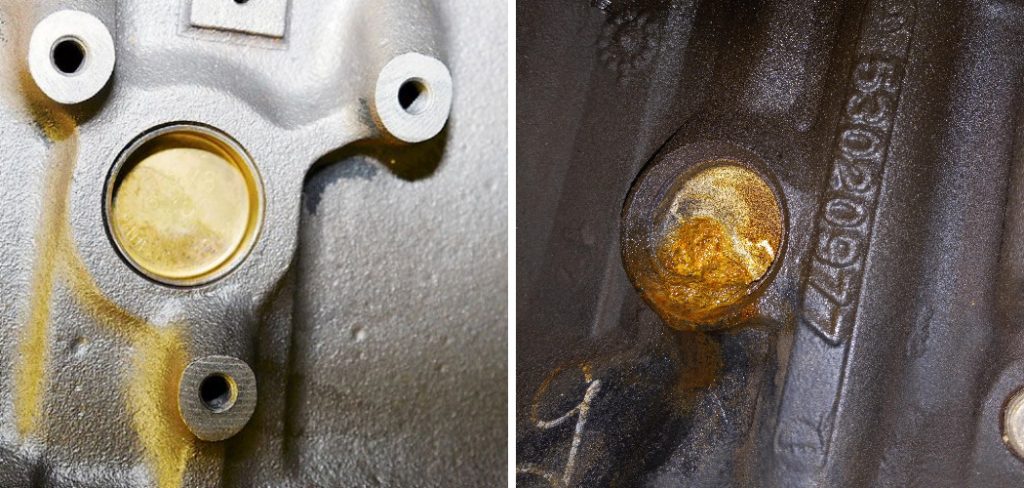
However, over time these plugs can become weak and corroded, causing leaks which can lead to serious engine damage if left untreated. In this guide, we will discuss how to fix a freeze plug leak and prevent further issues with your vehicle’s engine.
Signs of a Freeze Plug Leak
One of the first signs of a freeze plug leak is a drop in the coolant level. This can be seen by checking the coolant reservoir or radiator for low levels. You may also notice puddles of coolant under your vehicle or a sweet smell coming from the engine compartment.
If you notice any of these signs, it is important to take action and fix the leak as soon as possible to avoid costly repairs. Other signs of a freeze plug leak may include overheating of the engine, loss of power, and white smoke coming from the exhaust.
Understanding Freeze Plugs and Their Function
Freeze plugs are small, round disks typically made of metal, rubber, or a combination of both. They are located in various areas throughout the engine block and cylinder head and are designed to pop out if the coolant inside them freezes and expands. This prevents the engine block from cracking due to the expansion of frozen coolant. Freeze plugs also help with temperature control by allowing excess heat to escape from the engine.
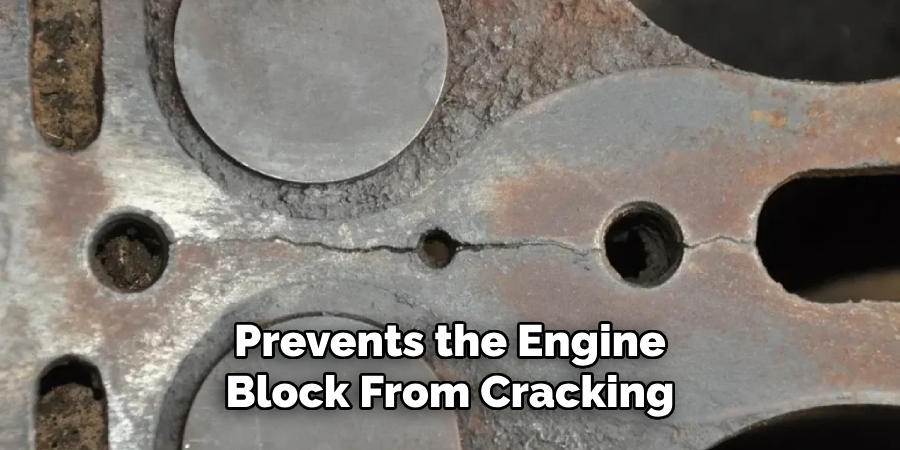
Tools and Materials You Will Need to Fix a Freeze Plug Leak
- Jack stands or ramps
- Socket set
- Freeze plug removal tool (optional)
- New freeze plugs
- Gasket sealer
- Antifreeze/coolant mixture
Step-by-step Guidelines on How to Fix a Freeze Plug Leak
Step 1: Locate the Freeze Plug Leak
The first step is to locate the freeze plug that is leaking. This can be done by visually inspecting the engine block and cylinder head for any signs of coolant leakage or by using a pressure tester to identify where the leak is coming from. Locating the leak is crucial in determining which freeze plug needs to be replaced.
Step 2: Prepare the Vehicle
Before beginning any repair work, it is important to ensure the vehicle is parked on a flat and level surface. Use jack stands or ramps to lift and secure the vehicle in place. This will provide easier access to the freeze plug that needs to be replaced. Preparing the vehicle also includes draining the coolant from the engine. If the coolant is still clean, it can be reused. If not, dispose of it properly and replace it with a new antifreeze/coolant mixture.
Step 3: Remove the Old Freeze Plug
Using a socket set or freeze plug removal tool, carefully remove the old freeze plug from its location. Be sure to clean out any debris or rust build-up in the hole before installing the new plug. While the freeze plug is removed, it is a good opportunity to inspect other plugs for signs of wear and consider replacing them as well. Make sure to also check the surrounding area for any signs of corrosion or damage.
Step 4: Install the New Freeze Plug
Place a small amount of gasket sealer on the outer rim of the new freeze plug and insert it into the hole. Use a socket or other suitable tool to tap it in place until it is flush with the engine block. Be careful not to damage the plug or the surrounding area during this process. If necessary, use a rubber mallet to gently tap the plug into place.
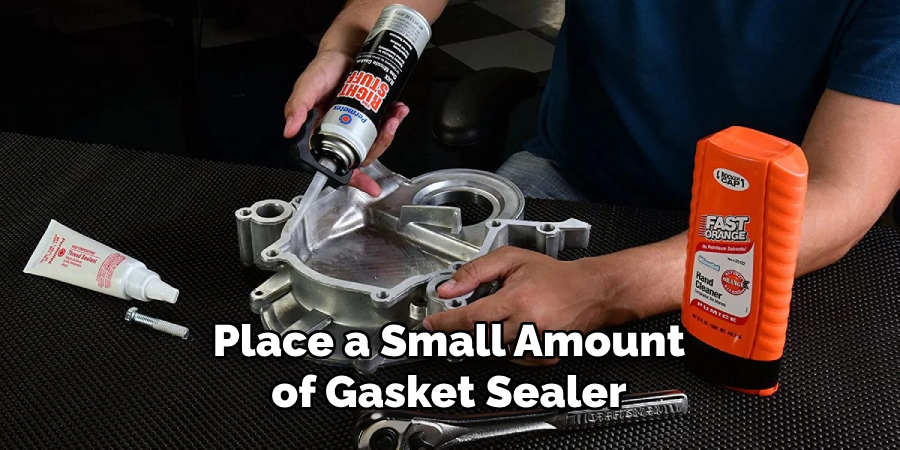
Step 5: Refill the Coolant
Once the new freeze plug is securely in place, refill the engine with the recommended amount of antifreeze/coolant mixture. Be sure to follow manufacturer instructions on mixing ratios and proper disposal of old coolant. It is important to also check for any leaks before driving the vehicle. Make sure to inspect the area where the new freeze plug was installed and any other areas that were previously leaking.
Step 6: Test Drive
Take your vehicle for a short test drive to ensure there are no further leaks or issues. Monitor the temperature gauge and pay attention to any unusual noises or smells. If everything seems normal, then your freeze plug leak has been successfully fixed. Make sure to periodically check your vehicle’s coolant levels and inspect the freeze plugs for any signs of wear in the future.
Following these simple steps can help you fix a freeze plug leak and prevent further engine damage. Remember, regular maintenance and inspection of your vehicle’s cooling system is important for its overall health and longevity. If you are unsure or uncomfortable performing this repair yourself, it is always best to seek professional help from a certified mechanic. Good luck! Happy driving!
Additional Tips and Tricks to Fix a Freeze Plug Leak
- Before you start replacing any parts, it’s important to inspect the freeze plug thoroughly. Look for signs of corrosion, rust, or damage that could be causing the leak. If the freeze plug is cracked or damaged in any way, it will need to be replaced.
- If you’re not sure which freeze plug is leaking, start by checking the ones that are easier to access. This could save you time and effort in the long run.
- When purchasing a new freeze plug, make sure to get one that is made of brass or stainless steel. These materials are more resistant to corrosion and can help prevent future leaks.
- Clean the area around the freeze plug before installation to ensure a tight seal. Use a wire brush or sandpaper to remove any debris, rust, or old gasket material.
- Apply a small amount of sealant or gasket maker to the edges of the new freeze plug before installing it. This will help create a tight seal and prevent any leaks.
- When tightening the freeze plug, be careful not to over-torque it. This could cause damage to the plug or surrounding components. Follow the manufacturer’s recommended torque specifications for best results.
- If you’re having trouble accessing a freeze plug, try using a universal joint socket and extension to get better angles and reach in tight spaces.
- Consider replacing all of the freeze plugs in your engine if you notice one is leaking. This can help prevent future leaks and save you time and money in the long run.
- Regularly checking and maintaining your vehicle’s cooling system can also help prevent freeze plug leaks. Make sure to inspect for any signs of corrosion or damage, and replace any worn-out components.
- If the freeze plug leak persists even after replacement, it may be a sign of a bigger issue such as a cracked engine block or cylinder head. In this case, it’s best to consult a professional mechanic for further diagnosis and repair.
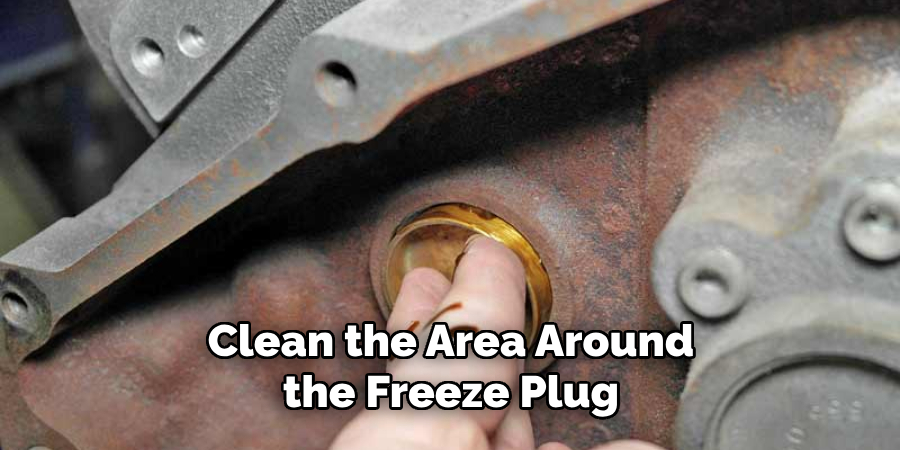
Following these tips and tricks can help you effectively fix a freeze plug leak and prevent any future issues. Remember to always use caution and follow proper safety procedures when working on your vehicle’s engine.
So, it is recommended to consult a professional mechanic if you are unsure or uncomfortable with the repair process. By properly maintaining your vehicle’s cooling system, you can avoid costly repairs and keep your engine running smoothly. Happy fixing!
Things You Should Consider to Fix a Freeze Plug Leak
- The first thing you should do when you notice a freeze plug leak is to identify the source of the leak. This can be done by inspecting the freeze plugs for any signs of damage or corrosion.
- Once you have identified the source of the leak, it is important to determine if it can be fixed or if the entire freeze plug needs to be replaced. In some cases, a simple repair or sealing of the leak may be enough, but in other cases, a replacement may be necessary.
- If you need to replace the freeze plug, make sure to use a high-quality replacement part that is compatible with your vehicle’s engine. Cheap or low-quality replacements can often lead to future leaks and problems.
- Before replacing the freeze plug, it is important to properly clean and prep the area around the freeze plug. This will ensure a proper seal and prevent any debris or contaminants from causing future leaks.
- When installing the new freeze plug, make sure to use a sealant or gasket to create a tight seal. This will help prevent any future leaks and ensure that the new freeze plug stays in place.
- It is also important to properly torque the freeze plug in place. Overtightening can cause damage to the engine block while under-tightening can lead to a loose seal and potential leaks.
- After replacing the freeze plug, it is recommended to monitor the area for any signs of leaking or further issues. If you notice any problems, it may be necessary to seek professional help to properly address the issue.
- In addition to fixing the freeze plug leak, it is important to address any underlying issues that may have caused the leak in the first place. This could include corrosion, overheating, or excessive pressure in the cooling system.
- Regular maintenance and monitoring of your vehicle’s cooling system can help prevent future freeze plug leaks from occurring. Be sure to check the freeze plugs and other components of the cooling system during routine maintenance.
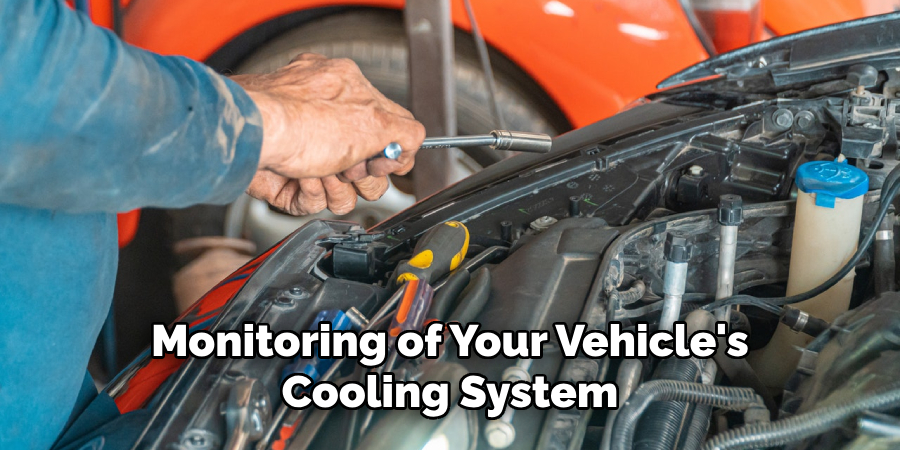
Following these considerations can help you effectively fix a freeze plug leak and prevent future issues. Remember to always use quality replacement parts and address any underlying problems to ensure the longevity of your vehicle’s cooling system. Your car will thank you!
So, it is important to regularly check and maintain the health of your vehicle’s cooling system. This includes checking for signs of corrosion or damage, monitoring coolant levels and temperatures, and regularly flushing the system to remove any buildup or contaminants. Happy driving!
Preventive Tips to Leak a Freeze Plug
1. Regularly Check Coolant Levels:
One of the main reasons for freeze plug failure is low coolant levels. The exposed metal in the engine block without adequate coolant can lead to corrosion and eventual leakage of the freeze plug. It is important to regularly check your vehicle’s coolant levels and top it up whenever necessary. This will not only prevent freeze plug failure but also ensure the engine runs smoothly and efficiently.
2. Use Quality Coolant:
Using poor-quality water as a coolant can also cause damage to freeze plugs. Water contains minerals and impurities that can lead to corrosion and clogging of the freeze plugs. It is essential to use high-quality, recommended coolant for your vehicle that provides adequate protection against corrosion and maintains the ideal pH levels in the cooling system.
3. Keep an Eye on Your Engine Temperature:
An overheating engine can put excessive pressure on the freeze plugs, causing them to fail. It is crucial to keep an eye on your vehicle’s temperature gauge and address any overheating issues promptly. This can prevent strain on the freeze plugs and extend their lifespan. This also helps in identifying any underlying issues with the cooling system that may need to be addressed.

4. Avoid Using Tapping or Hammering:
If you notice a leak in your freeze plug, it may be tempting to use a hammer or tapping tool to fix it. However, this can cause further damage and even lead to more leaks. It is best to leave any repairs or replacement of freeze plugs to a professional mechanic who has the necessary tools and experience to do it correctly.
5. Perform Regular Maintenance:
Regular maintenance of your vehicle’s cooling system is essential for preventing freeze plug failure. This includes flushing out old coolant, replacing worn-out hoses and belts, and checking for any signs of corrosion or leaks in the system. By keeping your cooling system in top condition, you can ensure the freeze plugs remain intact and function properly.
6. Address Any Warning Signs:
If you notice any warning signs such as coolant leaks or engine overheating, it is essential to address them promptly. Ignoring these signs can lead to more significant issues with the freeze plugs and other components of the cooling system. It is always better to get any potential problems checked and fixed early on to prevent costly repairs in the future.
7. Store Your Vehicle Properly:
If you live in an area with extreme temperatures, it is advisable to store your vehicle properly during the off-season. This includes draining the coolant and keeping the engine block warm to prevent freeze plugs from cracking or bursting due to freezing temperatures. Proper storage can also help prevent corrosion and other issues that may lead to freeze plug failure.

Following these preventive tips can go a long way in ensuring the freeze plugs in your vehicle remain intact and function properly. Regular maintenance, prompt addressing of warning signs, and using quality coolant are key to preventing costly repairs and keeping your engine running smoothly.
Remember to always consult a professional mechanic for any necessary repairs or replacements of freeze plugs. So, it is essential to follow these tips and take good care of your vehicle’s cooling system to avoid freeze plug failure. Keep your vehicle running smoothly and efficiently for years to come!
Frequently Asked Questions
What is a Freeze Plug Leak?
A freeze plug leak, also known as an expansion plug or welch plug, is a small metal disc installed in the engine block and cylinder head to prevent cracking from freezing coolant. It seals off the opening left behind from the casting process and is designed to fail under high pressure instead of causing damage to the engine. A leak occurs when the freeze plug corrodes, rusts, or is dislodged due to excessive pressure or coolant freezing.
Can I Drive with a Freeze Plug Leak?
It is not recommended to drive with a freeze plug leak as it can lead to significant damage to your engine. If the leak is small, you may be able to drive for a short distance, but it is best to get it fixed immediately.
How Do I Diagnose a Freeze Plug Leak?
The most common sign of a freeze plug leak is coolant leaking from the engine block. You may also notice steam coming from under the hood or a decrease in engine performance due to loss of coolant. If you suspect a freeze plug leak, it is best to take your vehicle to a mechanic for further inspection.
How Do I Fix a Freeze Plug Leak?
The first step in fixing a freeze plug leak is to locate the leak. Once you have identified which freeze plug is leaking, you will need to drain the coolant from your engine and remove the old freeze plug. To install a new freeze plug, clean the area thoroughly and use a sealant or gasket to secure it in place. It is recommended to replace all of the freeze plugs while you have access to them, as they tend to corrode and fail at the same time.
Can I Prevent a Freeze Plug Leak?
While freeze plug leaks can happen due to age or extreme weather conditions, there are steps you can take to prevent them. Regularly checking and maintaining your coolant levels will help prevent corrosion and freezing which can lead to freeze plug leaks. It is also important to keep an eye on your engine’s temperature and address any issues immediately to prevent excessive pressure on the freeze plugs.

Conclusion
Now you know how to fix a freeze plug leak and the importance of addressing it promptly. Remember to always prioritize your safety and the health of your vehicle by regularly maintaining and inspecting all components, including the freeze plugs. If you suspect a freeze plug leak, it is best to seek professional help to ensure proper diagnosis and repair. So, stay vigilant and keep your engine running smoothly! Happy driving!

About
JeepFixes Team is a skilled author for Jeep Fixes, bringing 6 years of expertise in crafting a wide range of jeep fixes. With a strong background in jeep fixes work, JeepFixes Team’s knowledge spans various types of fixtures, from decorative pieces to functional hardware, blending precision with creativity. His passion for jeep fixes and design has made him a trusted resource in the industry.
Professional Focus:
Expert in Jeep Fixes : JeepFixes Team aesthetic specializes in creating durable and innovative jeep fixes, offering both appeal and functionality. His work reflects a deep understanding of jeep fixes techniques and materials.
Sustainability Advocate : He is dedicated to using sustainable practices, ensuring that every fixture is crafted with eco-friendly methods while maintaining high-quality standards.
In his writing for jeep fixes, JeepFixes Team provides valuable insights into the latest trends, techniques, and practical advice for those passionate about jeep fixes, whether they are professionals or DIY enthusiasts. His focus on combining artistry with engineering helps others discover the true potential of jeep in design.
